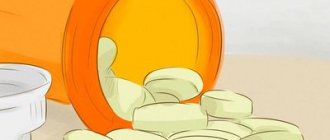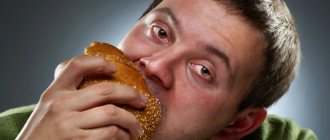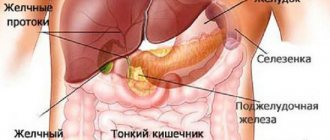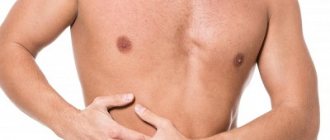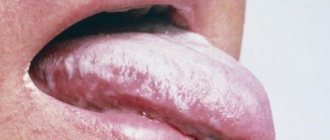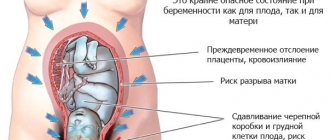What is the reason
If the liver is damaged, you may experience pain in the right hypochondrium.
In the area of the right hypochondrium are located:
- Pancreas
- Gallbladder
- Liver
- Right kidney
Dysfunction of these organs due to the occurrence of inflammatory processes in them can provoke pain. In addition to lesions located near organs, other diseases can cause pain in the right hypochondrium.
What to do if your side hurts
For any pain in the abdomen or back, you do not need to endure, diagnose and treat yourself. It is impossible to cure kidneys without knowing the cause of inflammation. Therefore, you must make an appointment with a doctor.
Even the most detailed description of pain in the side is not enough to make a diagnosis, and therefore the doctor will prescribe the patient to undergo a comprehensive study of the functioning of the urinary system.
Professional medical urologists are ready not only to identify the cause of pain in the side, but will also be able to save the patient from this pathology, restoring health and joy of life.
Cholecystitis
This disease is associated with a delay in the outflow of bile from the gallbladder along the biliary tract. Sharp pain from the right hypochondrium may indicate an attack of cholecystitis. More often this happens at night.
The muscle tone of the bladder increases, provoking its numerous contractions. The patient feels sharp and severe pain. The pain is usually short-lived, but the person experiences stress that turns into neuroses.
The disease develops as a result of cholelithiasis, slowly moving from the acute form to the chronic stage. The walls of the bladder are damaged due to the pressure of stones on it, thicken and become covered with ulcers, which subsequently scar. Stagnation of bile occurs, accompanied by:
- Mild pain
- Nausea
- Bloating
- Vomiting
The pain may worsen when eating fatty or fried foods.
Is pain in the side always caused by the kidneys?
Pain that occurs in this space does not always indicate kidney disease. It can be a characteristic symptom of a number of body pathologies - appendicitis, intercostal neuralgia, gastric ulcer, the presence of stones in the gall bladder or bile ducts.
If the main factor of pain really relates to nephrology (the kidney department), then the localization of unpleasant sensations shifts to the back and lower back. In this case, severe pain may well radiate to the stomach and be of a girdling nature. Therefore, the true cause can only be determined by undergoing diagnostics. For this purpose, the urologist or gynecologist refers patients to an ultrasound of the abdominal cavity and kidneys and urine and blood tests.
Ulcer
A stomach ulcer can cause pain in the right hypochondrium.
Duodenal ulcer causes regular stabbing pain in the right hypochondrium. This pain is so acute that it is called dagger-like. It occurs mainly at night and continues until food enters the intestines. In addition to pain, the patient may experience:
- Bloating
- Nausea
- Heaviness
- Deterioration in general health
Pancreatitis
With pancreatitis, the patient experiences throbbing, girdle pain in the right hypochondrium. Such sensations indicate that the acute disease is moving into a chronic stage and requires immediate conservative treatment.
Chronic pancreatitis develops against the background of an untreated acute disease or after urolithiasis. The cells of the pancreas die, and instead of them connective tissue is formed, the functions of the organ are lost: insufficient amounts of digestive enzymes and the hormone insulin are produced. The patient's blood sugar increases. After eating, the patient often feels a dull pain in the right hypochondrium.
Hepatic colic
A symptom of hepatic colic may be aching pain in the left side.
Aching pain on the right is characteristic of liver diseases. This condition is preceded by minor pain, which most patients do not attach importance to. All liver diseases in the initial stages are asymptomatic. For example, hepatitis does not manifest itself in any way; pain appears only when the virus is active. The patient appears:
- Prostration
- Loss of performance
- The skin and whites of the eyes become yellowish
In the future, if this disease is not treated, aching pain will be added to these symptoms.
Chronic hepatitis
If hepatitis is not diagnosed and treated in time, it becomes chronic. This disease occurs differently for each organism. There may be pain or not. Aching pain in the right hypochondrium in people with chronic hepatitis is accompanied by the following symptoms:
- Attacks of nausea
- Periodic vomiting
- Bloating
- Sharp attacks of pain after drinking alcohol or fatty foods
During the examination, a significant enlargement of the liver is detected, and when palpating this organ, the patient may experience pain.
Treatment
To temporarily relieve pain in the liver, patients take painkillers and antispasmodics on their own. Always remember that they can only be used after examination and recommendations from a specialist. Treatment is prescribed only after thorough diagnostic studies. Since many liver diseases have a similar course, it is necessary to make a correct diagnosis.
Before visiting a doctor, do not take painkillers or antispasmodics. They will mask important symptoms and make it difficult to make a diagnosis during examination.
Under no circumstances should you select medications yourself. And especially do not take medications prescribed to your friends in similar situations. There is no guarantee that the drugs that help them won't make things worse for you. Treatment is selected strictly individually.
To deal with this situation, consult a doctor as soon as possible. Our center is equipped with modern research equipment. This helps specialists make an accurate diagnosis and prescribe effective treatment as soon as possible.
Before visiting a doctor to relieve pain symptoms (instead of taking medications), pay attention to your diet. You can independently reduce the load on the organ.
The diet to eliminate pain in the liver should be gentle and low in fat.
- It is recommended to eat: black bread, low-fat dairy products, various cereals, vegetables and fruits, boiled meat and poultry (beef, chicken).
- it is necessary to completely exclude: fried, spicy smoked, and fatty foods, baked goods, mushrooms, pork, duck, canned food, confectionery, coffee.
In some cases, diet helps much more effectively than drug therapy.
The best diagnosis of pain in the liver is MRI of the liver and MRI of the gallbladder. To identify health problems in the early stages, doctors recommend periodically undergoing a full comprehensive examination of the body.
The contents of this article have been checked and confirmed for compliance with medical standards by a gastroenterologist of the highest qualification. category Grankova Tatyana Mikhailovna.
Cirrhosis
Similar symptoms are observed in liver cirrhosis. Pain begins in the last stages of the disease. First, an inflammatory process occurs in the liver cells, which subsequently leads to their death. In place of dead cells, connective tissue is formed, and the liver cannot cope with its work, reminding itself of aching pain in the right forearm.
Chronic pyelonephritis
With chronic pyelonephritis, patients experience pain on the right side.
This is a disease in which the pyelocaliceal system of the kidney becomes inflamed. The patient may experience aching pain on the opposite side of the diseased organ, with sensations radiating to the lower back. The disease is accompanied by:
- Increasing temperature
- Chills
- Frequent urination
- Weakness
- Headaches
- Edema
- Gynecological diseases
Pain in the right hypochondrium may indicate gynecological diseases, namely:
- Ectopic pregnancy
- Torsion of an ovarian cyst
- Adnexit
- Pain during ectopic pregnancy
If for some reason the fertilized egg is implanted somewhere other than the uterine cavity, an ectopic pregnancy begins to develop. With this pathology, the fertilized egg continues to grow. A woman experiences the same symptoms as during a normal pregnancy, with the addition of nagging pain in the place where the fertilized egg has implanted. Copious bleeding is also observed. The patient needs urgent surgical care.
Causes of rib pain
Pain on the left or right under the ribs can have a different nature, as well as the reasons that cause it. It can be strong and almost imperceptible, aching or sharp, occurring at certain moments or continuous. In almost every case, the cause of pain may be a disease that develops in the chest area.
At CELT you can get advice from a specialist algologist.
Make an appointment
Chest injuries
Chest injuries usually include fractures or bruises of the ribs. Fractures are characterized by ruptures of bone tissue and cartilaginous joints of one or more ribs. Depending on the injury, pain symptoms may be constant, aching, or acute and intense.
Bruises are characterized by mild pain, which is accompanied by swelling and the appearance of a hematoma in the area of injury. As a rule, pain symptoms disappear after seven to ten days. Fractures require mandatory diagnosis in order to exclude the possibility of injury to the soft tissues of the lung or other internal organs. Depending on the side of the injury, the pain can be localized on the right or left under the ribs or between them. Its intensity and duration depend on how severe the injury was.
Intercostal neuralgia
Pain between the ribs along the nerves can occur due to the following diseases:
- osteochondrosis of the thoracic spine;
- vertebral protrusion;
- intervertebral hernia.
Attacks in the form of shooting pain, similar to an electric shock, occur due to pinched or irritated nerve roots, and their appearance can be triggered by the following factors:
- hypothermia;
- penetration of infection;
- exercise stress;
- getting a back injury.
The pain becomes stronger with strong inhalations/exhalations or attempts to change body position.
Costochondritis
Costochondritis (or, as it is also called, Tietze's syndrome) is a disease in which thickening of the cartilage tissue of the ribs occurs, leading to their pain. Pain is not localized in one place and can spread to the entire sternum. They can be quite strong and appear brighter with sudden movements, deep inhalations/exhalations or coughing. Pain may be accompanied by:
- local edema;
- an increase in temperature in the area of the pathological process.
It appears suddenly and in its manifestations is comparable to an angina attack.
Angina pectoris
Angina is characterized by constant, pressing pain behind the sternum and sometimes between the ribs. It is localized in the retrosternal region and can spread to the left side of the neck, left arm and left side of the chest and may be accompanied by:
- heart rhythm disturbances;
- feeling of fear.
Other reasons
In addition, pain in the ribs can occur with the following diseases:
- malignant neoplasms (in particular, osteosarcoma of the ribs) are characterized by dull pain at the beginning of the disease, which becomes more and more pronounced as it develops;
- fibromyalgia - pain occurs when trying to raise your arms or turn your torso;
- pleurisy - pain symptoms manifest themselves with coughing and deep inhalations/exhalations;
- herpes zoster - characterized by intense pain under the ribs in the right or left side, which is accompanied by itching or burning.
Another reason is hypertonicity of the pectoral muscles, which occurs as a result of intense physical activity. The pain in this case increases and is localized in the intercostal space.
More about fibromyalgia
Acute appendicitis
When the appendix is inflamed, the patient feels pain in the right side.
With inflammation of the appendix, the patient may also feel pain in the right hypochondrium. Despite the location of this organ in the area of the right ilium, pain can occur anywhere in the abdominal cavity. During an attack of appendicitis, a patient may feel:
- Pain in the navel or stomach area
- Prolonged pain in the right side of the abdomen
- Reduced pain when turning the patient on the right side
- When turning on your left side or walking, the pain intensifies
In addition, you may experience:
- Vomit
- Diarrhea
- Temperature increase
- Thoracic osteochondrosis
Thoracic osteochondrosis is often accompanied by aching pain, radiating to both the right and left hypochondrium. Degenerative changes occurring in the spine affect neighboring organs. The pain may worsen when you inhale or when you exhale.
Heart diseases
With the abdominal form of myocardial infarction, the patient may experience aching pain in the right hypochondrium. This is explained by the fact that tissue necrosis has developed in a certain area of the heart muscle due to the cessation of its blood supply. Sharp pain in the epigastric region may also occur. The pain is sharp and burning, which does not go away when taking painkillers. With these signs, the patient must be urgently hospitalized.
It is impossible to make a diagnosis using a single symptom. You cannot endure pain and wait for it to go away on its own; many diseases require immediate treatment, otherwise serious complications and even death will occur. You should not try to explain to yourself the cause of the pain; only a doctor can make a diagnosis.
Symptoms
A feeling of fullness in the left hypochondrium or in the same area, but on the right, will very rarely be the only symptom in the clinical picture. This is only possible if it develops against the background of completely harmless reasons.
In the vast majority of situations, such discomfort is the first symptom, against the background of which a concomitant clinical picture develops, completely corresponding to the provoking disease.
It follows from this that the symptomatic picture will be individual for each person. Nevertheless, clinicians identify a number of signs that are observed in almost all cases.
The expansion under the ribs can be supplemented by:
- feeling of heaviness and fullness in the stomach;
- an increase in the size of the anterior wall of the abdominal cavity;
- pain syndrome of varying severity;
- rumbling in the stomach;
- flatulence;
- periodic nausea, which is not followed by vomiting;
- disruption of the bowel movement process;
- fatigue and weakness;
- decreased or complete lack of appetite, which is most common in children, since the described symptom can occur after eating;
- increased blood tone and temperature;
- heartburn and belching;
- weight loss;
- increased sweating;
- headaches and dizziness.
In cases of liver damage, the following may also appear:
- yellowness of the skin, visible mucous membranes and sclera;
- bitter taste in the mouth;
- frequent mood changes;
- severe skin itching;
- darkening of urine;
- discoloration of feces;
- coating of the tongue with a coating that has a white or yellowish tint.
In case of kidney pathologies, accompanying symptoms will be presented:
- irradiation of pain to the lumbar region;
- severe swelling;
- increased urge to empty the bladder;
- pale skin;
- decreased blood tone;
- pain and stinging when urinating;
- nausea without vomiting;
- high body temperature;
- general malaise and fatigue.
The appearance of the main external manifestation should be an impetus for seeking qualified help, especially for children. Otherwise, the risks of developing undesirable consequences are high. Death cannot be ruled out either.
